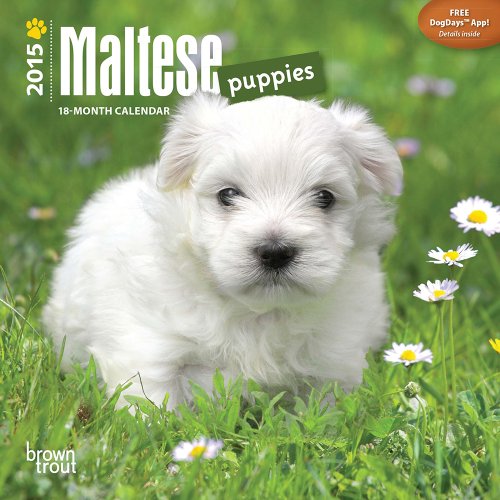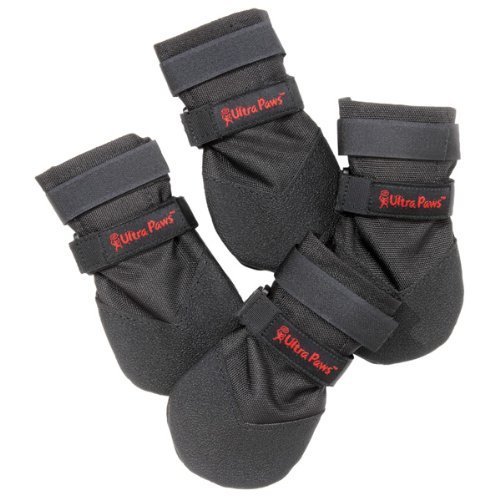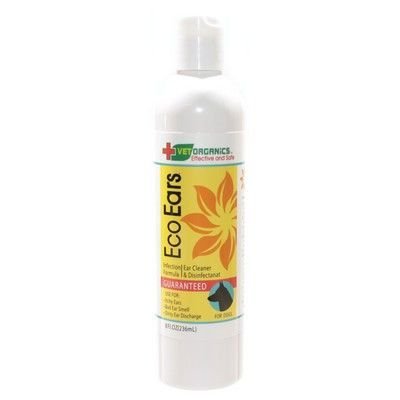
The Maltese is a popular breed of dog in the United States. It is gentle and affectionate and makes a great companion. It is extremely lively and playful, a characteristic which lasts even into old age.

Maltese Puppy
History
The Maltese was first bred on the island of Malta in the Mediterranean Sea, which is how it received its name. It was further developed in Italy by breeding it with the Bichon Frise and the Poodle to attain a smaller size, and is now the oldest of the Toy breeds.
The Maltese has a history that can be traced back at least 2000 years. Reference to the dog is found in Ancient Greek and Roman literature. Aristotle mentioned the name around 370 B.C. The Greeks erected tombs for their Maltese dogs. The Egyptians thought that the Maltese had the ability to cure people of disease and would therefore place the dog on the bed of an ill person.
The Royals and the aristocracy favored the breed for its good manners and affectionate nature. It came to be known as the “Roman Ladies’ Dog.” The little dog was a favorite of Queen Elizabeth I, Mary Queen of Scots, and Queen Victoria. Maltese were first seen in the U.S. in the late 1800s.
Appearance and Personality
The Maltese is a very intelligent dog and is always open to learning new tricks. It is easy to train and responds to positive reinforcements such as food rewards, praise, and petting. The breed loves routine such as sleeping in the same place every night and eating the same type of food and treats. It is a sprightly and vigorous mixture and excels as a companion but also as a therapy dog and competitor in AKC (American Kennel Club) Dog Shows.

Maltese Show Dog
The Maltese plays well with children, other dogs, and even other animals. He loves to be with his people. Because of its small size, toddlers and smaller children are not the best companions, because they could unintentionally give rough treatment. Even with its tiny size, the Maltese seems to be without fear. Its trust and affectionate behavior are highly appealing.
Ideally, the Maltese weighs under 7 pounds, preferably from 4 to 6 pounds. Originally, the breed came in many colors, but today they are always white with silky, long hair, a black button nose and brown eyes. If the pet stays inside for too long, it may develop what is called a winter nose which is pink because of the lack of sun. Once it is taken outside regularly, the nose will return to its black color.
Because it does not have an undercoat, the breed does not shed and is therefore a good choice for a family whose members may have allergies. Its glamorous white coat gives it a look of haughty nobility. The coat will fall all the way to the floor unless it is shorn. Show dogs often keep their very long hair. Some owners tie the pet’s hair on the top of its head into a topknot with a bow to keep it from falling in the eyes.
The Maltese has a tendency to bark constantly. There have been instances in Australia and Korea where the breed has been abandoned by its owner because of this annoying habit. It is important for the Maltese to receive attention and to have a daily walk to forestall this occurrence. Indoor play does, however, take care of much of its exercise needs.

Map Showing Malta
Care and Feeding
The Maltese is prone to ear infections. Its owner can prevent this by cleaning the ears on a regular basis. The dog will scratch its ears or cry when you touch them, a sure sign of an ear infection. It is easily treatable. The breed grows a lot of hair in its ears that needs to be removed, either by its owner or by the vet.
Unsightly tear stains are often seen on the Maltese’s face. You can expect this to begin when your puppy is four to five months old. The main cause of dog tear stains is wetness around the eyes. This excess moisture is a breeding ground for bacteria and yeast. Keep the area clean and have its face trimmed on a regular basis. Eye stain can sometimes be a result of the type of food or water you give your Maltese.
The Maltese is susceptible to "reverse sneezing", which is a honking, snorting, or gagging sound that is caused by excitement, play, allergies, or just waking up. It is not life-threatening or dangerous. It can experience discomfort in hot weather so it is good to have water within its reach at all times.
The breed must be gently brushed and combed daily to prevent matting, which is probable if the pet’s hair is long. Maltese should be bathed at least weekly. Trim the pet’s nails once or twice a month, especially if the dog does not wear them down naturally.
A Maltese’s teeth must be brushed two or three times a week to remove tartar buildup and bacteria, and to prevent gum disease and bad breath. Small breeds such as the Maltese have small mouths with teeth very close together, so dental problems are more likely to occur.
The Maltese is mainly a housedog and does not tolerate extreme heat or cold well. Many owners paper train their Maltese so they don't have to take them outdoors when the weather is too hot or cold.
The recommended daily amount of food is 1/4 to 1/2 cup of high-quality dry food, given in two meals. To prevent your pet from becoming fat, food should not be left out all the time. The better quality of the dog food, the more nourishment it contains.
With care and attention, a Maltese can live for 15 years, and sometimes as long as 18 years.

Halle Barry and Maltese
One Family's Experience
My daughter and her family have a Maltese named Maddie. I asked her for her input; here is her direct quote:
“We are convinced that Maddie does not think she is a dog. She thinks she is one of the family. She also thinks she is in charge most of the time. She plays a little bit, but mostly likes to lounge around. She likes everyone in the family but seems to look at me and Jonathan as her main caregivers. If she wants food or water, she will growl at her bowl and kick it, and then try to get our attention by barking if needed.
She is very smart. She knows when someone will be taking something out of the refrigerator that she wants and will sit there until you take it out and then bark for it. When she sees another dog out on a walk, she barks and gets very territorial but, if she gets too close to the dog, she gets scared and wants to be picked up.
When going to the groomer or vet, she hides her face in my arm so she does not have to look at the strange people. She goes to the groomer every 4-6 weeks and gets feathers in her hair. The Maltese breed does not shed; they have actual hair that needs to be cut. Therefore, no dog fur around the house and good for people with allergies.
She gets very excited to see us after being home herself during the day. When we are home, she is always in the same room as us. She sleeps on the corner of my bed. All I have to say to her is "night night" and she runs up the stairs and waits to be picked up and put on the bed. She then gets angry and growls if anyone tries to take her off the bed.”
 Maltese Puppies 2015 Mini 7x7 (Multilingual Edition)
Maltese Puppies 2015 Mini 7x7 (Multilingual Edition) Dog Ramps for the SUV
Pets are a big part of our f
Dog Ramps for the SUV
Pets are a big part of our f
 Whats in Your Pets Dog Paw and Feet
Paw showing pads A. Claw, B. Digital Pads, C. Metacarpa
Whats in Your Pets Dog Paw and Feet
Paw showing pads A. Claw, B. Digital Pads, C. Metacarpa
 Pet Health Insurance
Nunya Undergoing Radiation Therapy (Not Inexpensive!)
Pet Health Insurance
Nunya Undergoing Radiation Therapy (Not Inexpensive!)
 Dog clothing is essential
Dog clothing is essential
Dog clothing is essential
Dog clothing is essential
 Stinky Dog Ears
My dog Sasha (pictured) has
Stinky Dog Ears
My dog Sasha (pictured) has
Copyright © 2005-2016 Pet Information All Rights Reserved
Contact us: www162date@outlook.com